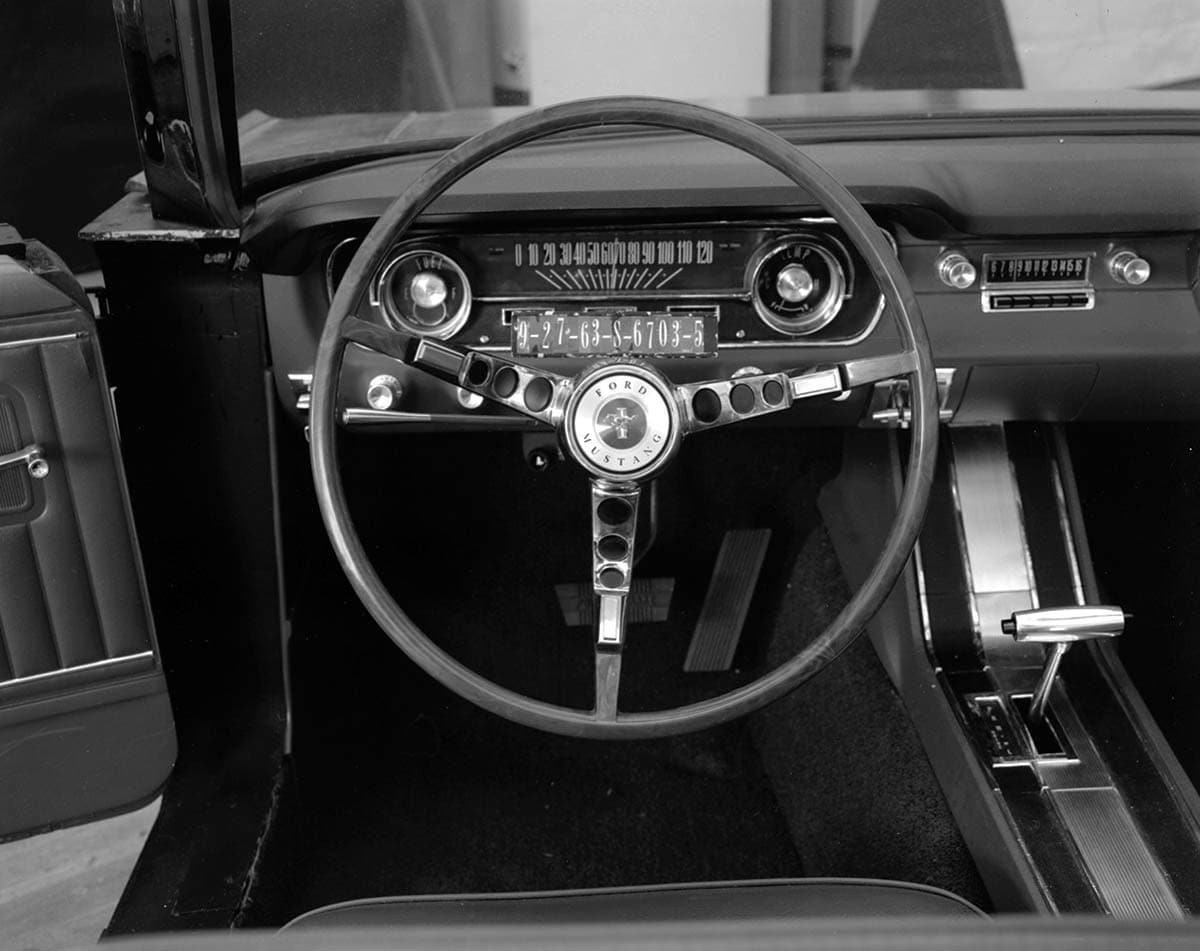Oct 31, 2013
It’s a Plane! It’s a Horse! No, It’s the Ford Mustang and One of the World’s Favorite Cars
An enduring question about Ford Mustang, even after nearly 50 years on the road, is the origin of its name. Does it honor the famed P-51 fighter plane of World War II? Or the wild horse of the American West?
Depends who you ask. The real question for Mustang fans: Does it even matter?
Is the world’s love affair with Mustang about the name? Or about a car that always has offered an appealing blend of style, performance and practicality?
If you ask most people today what they think of when they hear Mustang, chances are they’ll mention the car before the horse or the plane.
There long have been conflicting stories from the people who were there at the time, as well as many who weren’t, about how the name came about. As the car we know today as Mustang was developed in 1962 and 1963, a wide range of names were considered and used on the various design proposals, including Cougar, Torino, Allegro, Avventura and even Thunderbird II.

If some of those names sound familiar, it’s because they were used on other cars in the years after Mustang debuted. Others receded into the annals of history. The decision to go with Mustang came in late 1963, although various design models and prototypes carried other names until early 1964 as part of the security effort around the project.
Why so much confusion over the source of the name? No conclusive documentation exists, and human memories are imperfect at best. Count the number of people who claim to have witnessed Jimi Hendrix playing the “Star Spangled Banner” at Woodstock in the summer of 1969, for example, and the population at Max Yasgur’s farm would have been many times the roughly 400,000 people in attendance.
Different people also invariably have unique interpretations of the same events. In his book “Mustang Genesis,” author Bob Fria quotes designer John Najjar:
R.H. Bob Maguire, my boss, and I were looking through a list of names for the car. I had been reading about the P-51 Mustang airplane and suggested the name Mustang in remembrance of the P-51, but Bob thought the name as associated with the airplane was too ‘airplaney’ and rejected that idea. I again suggested the same name Mustang, but this time with a horse association because it seemed more romantic. He agreed and we together selected that name right on the spot, and that’s how it got its name.
From “Mustang Genesis: The Creation of the Pony Car” by Robert A. Fria

Another interesting although less-plausible story surrounds the Southern Methodist University Mustangs football team. Following the team’s one and only game against the University of Michigan in Ann Arbor in September, 1963, then-Ford Motor Company Vice President Lee Iacocca reportedly visited the SMU locker room.
According to SMU lore, Iacocca told the losing team, “After watching the SMU Mustangs play with such flair, we reached a decision. We will call our new car the Mustang. Because it will be light, like your team. It will be quick, like your team. And it will be sporty, like your team.”
This all reportedly came a year after the Mustang name first appeared in public on a 1962 concept car and just a week before a second concept debuted with the first real preview of the coming production car. By this time, advertising agency J. Walter Thompson also had done market research on a variety of animal names, including Mustang and Cougar. Dean Weber, Ford Motor Company archives manager found several design studio photos of a design mockup bearing Mustang badges dated the day before the game.

If the SMU locker room incident did in fact happen, it’s more likely that Iacocca did it more as a teaser to garner attention for the upcoming car. Iacocca himself has told numerous people - including Bob Fria - that it never happened.
Later in 1964, after the car went on sale, SMU head coach Hayden Fry, did take delivery of his own Mustang painted in the team colors of red and blue.
Unfortunately, there doesn’t appear to be any credible evidence to back up what is likely nothing more than an urban legend that may well have been started by an SMU fan who was also enamored with the pony car.
In the end, the name blended beautifully with a galloping horse logo that designer Phil Clark had already been dabbling with for several years.
Whatever the rationale for selecting Mustang, the name still makes sense 50 years later. The car, the plane and the horse all share similar characteristics compared to others of their kind: compact, quick, agile and sleek.
The same qualities are among the reasons Mustang has earned such an avid following. What’s in a name? Both less and more than you might think!




